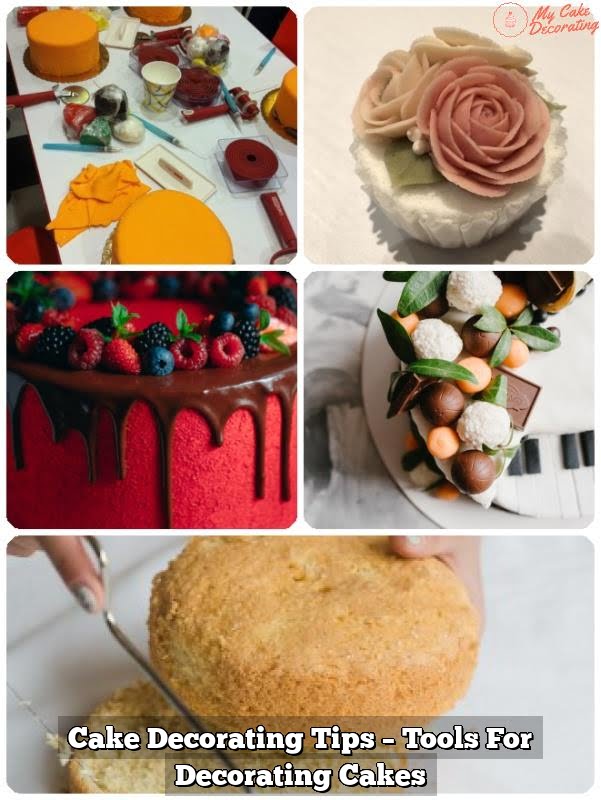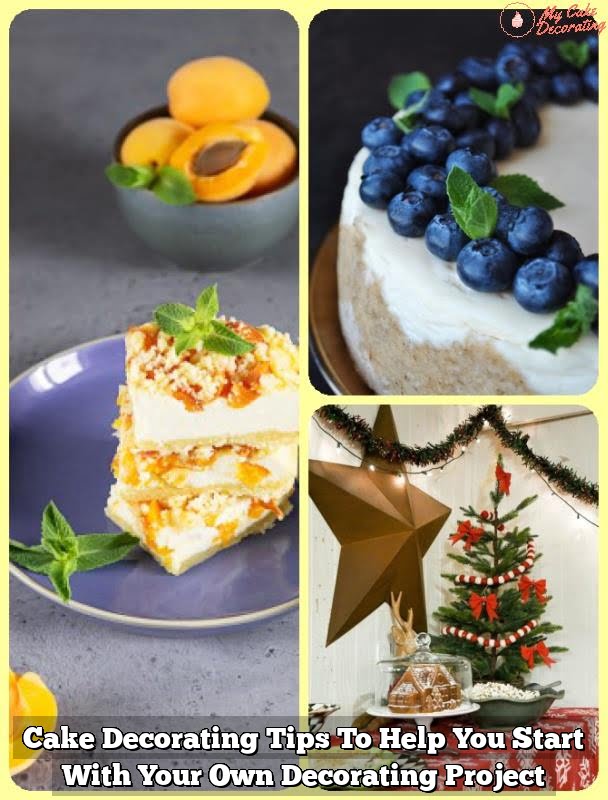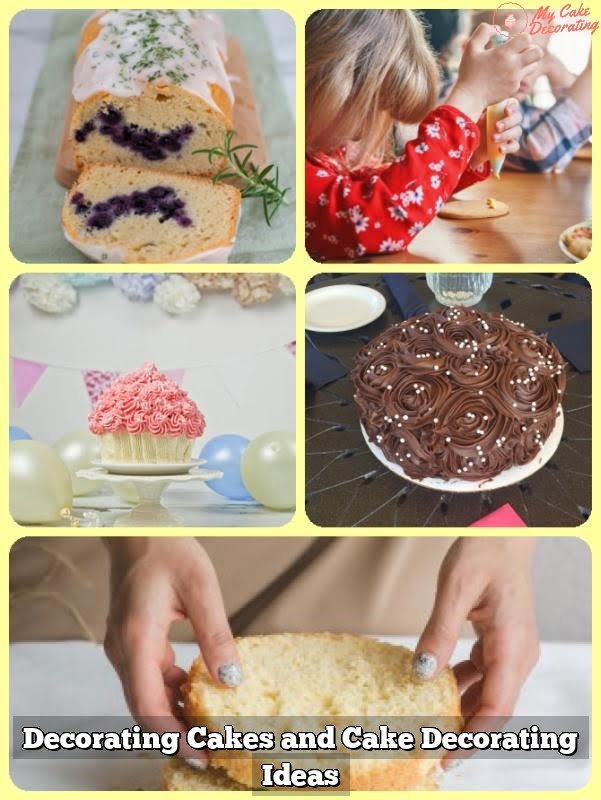Cake decorating tips play a crucial role in creating beautifully designed cakes, and choosing the right tip for edging can significantly enhance the overall look of your masterpiece. The type of cake decorating tip you use for edging can make a world of difference in the final presentation of your cake, adding intricate details and a professional finish.
From simple borders to elaborate designs, the choice of cake decorating tip for edging can transform a plain cake into a work of art.
When it comes to selecting the perfect cake decorating tip for edging, there are various options available on the market to suit different preferences and design requirements. From round tips for classic finishes to star tips for more intricate designs, there is a wide range of choices to explore. Whether you prefer petal tips for floral motifs or leaf tips for botanical accents, each type of cake decorating tip offers unique possibilities for creating stunning edge designs on your cakes.
In this article, we will delve into the world of cake decorating tips specifically designed for edging purposes. We will discuss some of the best tips available, such as the Wilton 2D tip, Ateco 844 tip, and PME Supatube tip, and provide detailed insights on how to use them effectively to achieve flawless edges. Stay tuned as we explore creative edge designs, offer expert tips and tricks, and highlight common mistakes to avoid when using cake decorating tips for edging.
Types of Cake Decorating Tips
Cake decorating tips play a crucial role in achieving beautifully edged cakes that stand out. These tips come in various shapes and sizes, each serving a different purpose in the world of cake decorating. Understanding the different types of cake decorating tips available on the market can help you choose the right one for your edging needs. Here is an overview of the most common types of cake decorating tips:
- Round Tips: Round tips are versatile and can be used for creating smooth borders, writing messages, or outlining designs on cakes.
- Star Tips: Star tips create a textured look with ridges and are perfect for piping stars, swirls, shells, and rosettes on cakes.
- Petal Tips: Petal tips are used to create realistic flower petals, leaves, ruffles, and other intricate details on cakes.
- Leaf Tips: Leaf tips are specially designed to pipe lifelike leaves and foliage on cakes, adding a touch of nature to your designs.
When it comes to choosing the right cake decorating tip for edging, consider the design you want to achieve and the level of detail required. Experimenting with different types of cake decorating tips can help you discover which works best for your specific project. Whether you prefer classic round edges or intricate petal designs, there is a perfect cake decorating tip out there for every baker.
Using the right cake decorating tip can elevate your cake creations from ordinary to extraordinary. The next time you embark on a baking project, consider experimenting with different types of cake decorating tips to add creativity and flair to your designs. So next time you find yourself asking ‘which cake decorating tip do you use for edging?’, remember that it all comes down to personal preference and experimentation to find the perfect match for your artistic vision.
Best Cake Decorating Tips for Edging
When it comes to cake decorating, choosing the right tip for edging can make a significant difference in the overall look of your creation. The right cake decorating tip can enhance the design and bring your cake to the next level. There are several different types of cake decorating tips available in the market, each specifically designed for various purposes. However, when it comes to edging, there are a few standout options that consistently deliver exceptional results.
Wilton 2D Tip
One of the most popular choices for edging cakes is the Wilton 2D tip. This versatile tip features a large open star design that creates beautiful swirls and rosettes with ease.
The wide opening allows for a generous amount of frosting to be piped, making it perfect for creating bold and eye-catching edges on cakes. Whether you’re looking to add a decorative border or intricate detailing around the edges, the Wilton 2D tip is a reliable choice that never fails to impress.
Ateco 844 Tip
Another top contender for edging cakes is the Ateco 844 tip. This unique tip features a curved petal shape that produces delicate ruffles and scallops along the edges of a cake. The Ateco 844 tip is ideal for creating elegant borders and adding texture to your designs.
With just a simple twist of the wrist, you can achieve sophisticated edge designs that will elevate your cakes to new heights. Whether you’re decorating a wedding cake or birthday treat, the Ateco 844 tip offers endless possibilities for creative expression.
PME Supatube Tip
For those looking for precision and fine details in their edge decorations, the PME Supatube tip is an excellent choice. This slim-line piping tip is perfect for creating intricate patterns and fine lines along the edges of cakes.
Whether you’re outlining shapes or adding intricate lace-like designs, the PME Supatube tip provides ultimate control and accuracy in your decorating process. With its professional-quality construction and precise output, this tip is favored by experienced decorators who demand perfection in every detail.
How to Use Cake Decorating Tips for Edging
Cake decorating tips are essential tools for creating beautiful and intricate designs on cakes, and when it comes to edging, the right tip can make a significant difference in the final look of your cake. So, which cake decorating tip do you use for edging?
When it comes to using cake decorating tips for edging, the process involves preparing the piping bag correctly and mastering different edge designs. To start, select the desired cake decorating tip based on the design you want to achieve – whether it’s creating smooth borders, delicate ruffles, or elegant rosettes. Make sure to have a firm grip on the piping bag to control the flow of frosting as you work.
Here is a step-by-step guide on how to use cake decorating tips for edging:
1. Prepare the piping bag: Fill a piping bag with your desired frosting and cut off the tip of the bag to fit the selected cake decorating tip.
2. Hold at a proper angle: Hold the piping bag at a 45-degree angle towards the surface of the cake.
3. Create different edge designs: Practice steady pressure as you move along the edge of the cake, experimenting with different movements to create various designs such as zigzags, shells, or scallops.
| Step | Description |
|---|---|
| Prepare Piping Bag | Fill piping bag with frosting and trim according to selected tip. |
| Hold at Proper Angle | Keep piping bag at a 45-degree angle towards cake surface. |
| Create Designs | Use consistent pressure to create different edge designs like shells or rosettes. |
By following these steps and practicing your technique with different cake decorating tips for edging, you can elevate your cake decoration skills and create stunning designs that will impress any audience. Remember that experimentation is key when it comes to finding out which techniques work best for achieving perfect edges on your cakes.
Creative Edge Designs
When it comes to cake decorating, the edge design can truly make a cake stand out and elevate its overall appearance. Creative edge designs using different cake decorating tips can add flair and personality to any cake, whether it’s for a special occasion or just for fun.
By experimenting with various tips and techniques, you can create unique and eye-catching designs that will impress your guests. In this section, we will explore some inspiring ideas for creative edge designs using different cake decorating tips, including ruffles, zigzags, shells, and rosettes.
Ruffles
Ruffles are a classic and elegant choice for adding texture to the edges of a cake. To create ruffles using a cake decorating tip, such as the Wilton 104 tip, start by piping a thin line of icing along the edge of the cake.
Then, using a back-and-forth motion with steady pressure on the piping bag, create overlapping waves to form beautiful ruffles. You can vary the size and spacing of the waves to achieve different looks, from delicate frills to bold statement ruffles.
Zigzags
Zigzag edge designs are perfect for adding a playful touch to cakes for birthdays or other celebrations. To create zigzags using a star tip like Ateco 869, simply pipe diagonal lines across the edge of the cake in a zigzag pattern.
Alternate the direction of the lines to create a visually dynamic design that will catch the eye. This technique is versatile and works well with both buttercream and royal icing, allowing you to customize your cake decorations according to your preference.
Shells
Shells are another popular choice for edging cakes due to their timeless appeal and versatility. Using a petal tip like Wilton 125 or an open star tip like Ateco 825, you can create intricate shell patterns along the border of your cake. Start by piping small swirls or loops in a continuous motion to form overlapping shell shapes.
The result is a decorative edge that adds sophistication and charm to any dessert. Experiment with different sizes and angles to achieve various shell designs that suit your aesthetic vision.
By incorporating these creative edge designs into your cake decorating repertoire, you can showcase your skills and creativity while bringing joy to those who enjoy your delicious creations. Whether you prefer soft ruffles, playful zigzags, elegant shells, or charming rosettes, there is no limit to what you can achieve with the right cake decorating tips in hand.
So go ahead and experiment with different techniques, colors, and textures until you find your signature style that truly sets your cakes apart. Happy decorating.
Tips and Tricks for Perfect Edging
Cake decorating tips are essential tools in creating beautifully decorated cakes, with edging being a crucial aspect that can elevate the overall look of your creation. To achieve flawless edges on cakes, it is important to master some expert tips and tricks. One of the key elements to perfecting cake edging is maintaining consistent pressure while piping the frosting onto the cake. This ensures that the edges are smooth and even, resulting in a professional-looking finish.
To practice and improve your skills in edging, consider using a parchment paper before decorating the actual cake. This allows you to experiment with different techniques and designs without the pressure of getting it right on the first try. By practicing on parchment paper, you can refine your piping skills, adjust your pressure, and have more control over your movements. Once you feel confident with your technique, you can then transfer the design onto the cake for a polished look.
When using cake decorating tips for edging, it is also helpful to choose the right tip size for the specific design you want to create. Different tips produce varying effects, so understanding how each tip works will help you achieve your desired result.
Whether you opt for a round tip for simple borders or a star tip for intricate designs, selecting the appropriate tip is crucial in achieving flawless edges on cakes. Experimenting with various tips and designs will not only enhance your skills but also add creativity and uniqueness to your cake decorations.
In addition to maintaining consistent pressure and practicing on parchment paper, another valuable tip for perfect edging is to ensure that you hold the piping bag at the correct angle. The angle at which you hold the bag can determine the thickness and shape of your edges, so it’s important to find a comfortable position that allows you to have control over your piping.
By following these expert tips and tricks, you can achieve flawless edges on cakes that will impress both yourself and others with your newfound cake decorating skills.
Common Mistakes to Avoid
When using cake decorating tips for edging, it is essential to be mindful of common mistakes that can affect the outcome of your design. One of the most common mistakes people make is using the wrong tip size for their desired edge. Different tips are designed for various effects, so it’s crucial to select the appropriate tip based on the type of edging you want to achieve.
For example, a smaller round tip may work best for fine lines or intricate designs, while a larger star tip might be more suitable for creating bold and textured edges. Ensuring you have the right tip size can make a significant difference in the final look of your cake.
Another mistake to avoid when using cake decorating tips for edging is not holding the piping bag at the correct angle. The angle at which you hold the piping bag can impact the shape and consistency of your edge design. For straight and even edges, it’s important to keep your piping bag perpendicular to the surface of the cake.
If you tilt the bag too much in any direction, it can result in uneven or misshapen edges. Practice holding the piping bag at different angles to see how it affects your design before applying it to your cake.
In addition to choosing the right tip size and holding the piping bag at the correct angle, another mistake to watch out for is inconsistent pressure while piping. Maintaining a steady and consistent pressure on the piping bag ensures that your edge design stays uniform throughout.
Sudden changes in pressure can lead to variations in thickness or shape, detracting from a clean and polished finish. By practicing control over your pressure technique, you can achieve precise and professional-looking edge designs on your cakes.
| Common Mistakes | How to Avoid |
|---|---|
| Using wrong tip size | Select appropriate tip based on desired effect |
| Not holding piping bag correctly | Maintain perpendicular angle to surface |
| Inconsistent pressure while piping | Practice steady and even pressure control |
Conclusion
In conclusion, choosing the right cake decorating tip for edging is crucial in taking your cake decorating skills to the next level. The type of tip you use can greatly impact the overall look and feel of your cakes, whether you’re going for a simple and elegant design or a more intricate and elaborate one.
By investing in quality cake decorating tips specifically designed for edging, such as the Wilton 2D tip, Ateco 844 tip, or PME Supatube tip, you can achieve professional-looking results that will impress your friends and family.
My final piece of advice for readers is to not be afraid to experiment and have fun with different tips and designs. Cake decorating is an art form that allows for endless creativity and personal expression.
Try out different edge designs like ruffles, zigzags, shells, or rosettes using various cake decorating tips to discover what works best for you and your style. Practice makes perfect, so don’t get discouraged if your first attempt doesn’t turn out exactly as planned – keep practicing and honing your skills to become a master at cake decorating.
Remember, cake decorating should be an enjoyable and fulfilling experience. Whether you’re a beginner just starting out or an experienced baker looking to refine your skills, the key is to have patience and passion for creating beautiful cakes. So go ahead, unleash your creativity, try out different cake decorating tips for edging, and let your imagination run wild – the possibilities are endless.
Frequently Asked Questions
What Tip Do You Use for Cake Borders?
When it comes to creating cake borders, I usually prefer using a round tip, such as Wilton Tip 12 or 1A. This tip allows me to pipe smooth and consistent borders around the edges of the cake without any fuss, giving it a clean and professional finish.
What Does Wilton Tip 21 Do?
Wilton Tip 21 is commonly used for creating stars or rosettes on cakes and cupcakes. This star tip produces a beautiful swirl pattern that adds a decorative touch to any baked goods. I often use this tip when I want to add a simple yet elegant design to my desserts.
Which Nozzle to Use for Piping Shells?
For piping shells, I find that using a large open star nozzle works best. Nozzles like Wilton 1M or 8B are perfect for creating detailed shell designs with a ridged texture. By using this type of nozzle, I can easily pipe intricate shell borders on cakes and other confections with precision and finesse.

Welcome to my blog about home and family. This blog is a place where I will share my thoughts, ideas, and experiences related to these important topics. I am a stay-at-home mom with two young children. I hope you enjoy reading it! and may find some helpful tips and ideas that will make your home and family life even better!





